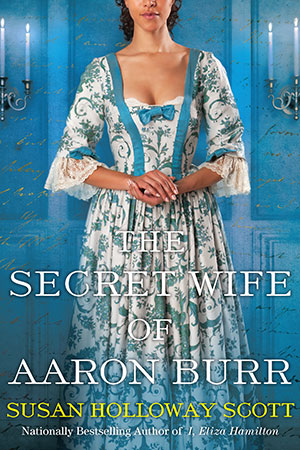Susan reporting,
This lovely two-piece ensemble is on display in the Printed Fashions: Textiles for Clothing and Home Exhibition (currently at the DeWitt Wallace Decorative Arts Museum of Colonial Williamsburg through 2018; see other posts from the exhibition here, here, here, and here.) This photo, left, shows the dress as it's presented in the exhibition, complete with an appropriately oversized cap and full neckerchief (modern reproductions) in the style of the 1790s. It's also shown in the photo from the museum's website, lower left.
Here's the information from the exhibition's placard:
"With their brilliant, colorfast hues and luxurious polished surface finish, Indian chintzes made for the export market were among the most desirable of the printed cottons. The India chintz cotton used to make this two-piece gown was recycled from an older but still valuable garment around 1790. Worn at that time by Anne Van Cortlandt Van Rensselaer of Croton, and later Albany, New York, the gown features a long-sleeved jacket with a peplum over a pleated, ruffled petticoat, or skirt. The ensemble was appropriate of informal daytime wear."
While today cotton is regarded as an inexpensive option used mostly for casual clothing, in the 18thc printed cottons like this were costly luxury fabrics, painted and dyed in India for the export market in Europe and America. Despite recycling the fabric from an earlier garment, Anne Van Rennselaer was an affluent woman from an elite New York family. The ruffled peplum at the back waist of the jacket, right, added a stylish accent that must have fluttered charmingly when she walked. To achieve the fashionable volume in the skirts - less extreme than earlier in the 18thc, but still in evidence - the petticoat would have been worn over a false rump. The cotton jacket is lined with less expensive linen, making the ensemble both cool and comfortable in warmer weather.
(And yes, there's even a slight connection between this dress and the heroine of my new book I, Eliza Hamilton. Eliza Schuyler Hamilton (1757-1854) was a distant cousin of Anne Van Cortlandt Van Rennselaer (1766-1855), the gown's original owner (Eliza's mother was also a Van Rennselaer). Anne and Eliza were close in age, and once Anne married Philip Van Rensselaer in 1787 and moved to Albany, they belonged to the same Dutch church as Eliza's family, and almost certainly met socially. Both women's husbands were involved in politics, too: Anne's husband Philip was the mayor of Albany, while Eliza's husband Alexander Hamilton served in the New York state legislature, attended the Constitutional Convention, and was the first Secretary of the Treasury in the new federal government. As for this chintz ensemble - I wouldn't be at all surprised if Eliza had one much like it in her wardrobe, too.)
Jacket and Petticoat (Two-Piece Gown), c1790, East Indian textile of an earlier date. Collection, Colonial Williamsburg Foundation.
Upper left photograph ©2017 by Susan Holloway Scott.
All others courtesy of Colonial Williamsburg.
Laws Concerning Women in 1th-Century Georgia
10 months ago












 One of us --
One of us -- 


